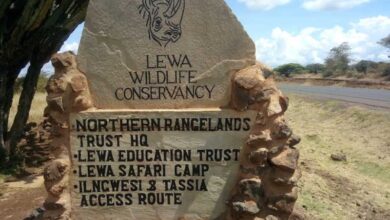
UNESCO World Heritage Site is a place or monument that is legally protected by an international treaty through the United Nations Educational, Scientific, and Cultural Organization (UNESCO). There are now 1154 World Heritage Sites.
A trip to Kenya is an unforgettable experience because of its legendary beauty. The country is home to 7 cultural and natural sites that have been recognized by UNESCO as World Heritage Sites because of its significance in terms of cultural, historical, ecological, and archaeological worth, in addition to the potential to witness the big five game species.
The Kenya UNESCO World Heritage Sites include;
1.Mount Kenya National Park/Natural Forest
This national park and forest were established in 1949, and in 1997 they were included in Kenya’s list of UNESCO World Heritage Sites. The creation of this national park had as its goal the preservation of Mount Kenya, its ecosystem, and its animals. This natural setting is essential because it provides a natural habitat for the local animal species. Additionally, it serves as a water catchment area that supplies water to the entire country of Kenya. The area is a UNESCO Biosphere Reserve as well. Before it was given national park status, this location was mostly a forest reserve.
2. Sacred Mijikenda Kaya Forests
The Mijikenda Kaya Forests are made up of 11 distinct woodland areas scattered over 200 kilometers along the coast that once served as the Mijikenda people’s fortified villages, or kayas. The 16th-century kayas, which were abandoned by the 1940s, are now thought of as the homes of the ancestors. They are also respected as holy places, and elder councils look after them as such. The places are listed as bearing special witness to a cultural tradition and for their close connection to an active tradition. In 2008, the locations received UNESCO world heritage status.
3. Lake Turkana National Parks
The three national parks that encircle Lake Turkana—Sibiloi National Park, South Island National Park, and Central Island National Park—have been a part of the UNESCO Natural Heritage since 1997. The lake is the second-largest inland body of water in Kenya and the most salinized of the Great Lakes in Africa. The national parks offer a haven for a wide variety of plants and animals, as well as significant hippo breeding areas. The lake has been listed on the Red List of World Heritage in Danger because it is endangered by a dam project in the neighboring nation of Ethiopia.
4. Kenya Lake System In The Great Rift Valley
The first natural site on Kenya’s list of UNESCO World Heritage Sites is the Kenya Lake System in the Great Rift Valley. It is a natural setting made up of three lake basins that are situated at the bottom of a valley. This location is renowned for the abundance of migrating birds, great white pelicans, and lesser flamingos that can be found there. Lake Elementaita, Lake Nakuru, and Lake Bogoria are the three lakes that make up this lake system. Water seepage from below the surface connects these lakes hydrogeologically. These lakes’ alkalinity encourages the growth of the algae that the flamingos eat.
5. Fort Jesus
Fort Jesus, built in the 16th century, was declared a UNESCO World Heritage Site in 2011. It is a fortress on the island of Mombasa, the largest port city in the African country. It was built by the Portuguese to protect the city. In the meantime, it belonged to the Ottoman Empire before being conquered by the British in 1895. Since 1963, Kenya’s independence has been used as a national museum and is a major tourist attraction.
6. Thimlich Ohinga Archaeological Site
Local Nilotic inhabitants of the area are the Thimlich Ohinga archaeological site, also known as “frightening dense forest” in Dholuo. The enclosure was most likely constructed in the 16th century using only loose stones and blocks without any cement or treatment. Materials discovered on the site have an archaeological record that dates back more than 500 years. The biggest and best maintained of these traditional enclosures is Thimlich Ohinga. The area was home to the first pastoral villages in the Lake Victoria Basin from the sixteenth to the middle of the twentieth centuries, and it is a unique example of the practice of large dry-stone walled enclosures. The most recent Kenyan site to be included on the World Heritage List was Thimlich Ohinga in 2018.
7. Lamu Old Town
Since Lamu’s ancient town is the best surviving Swahili settlement in East Africa, it was added to the UNESCO World Heritage List in 2001. The old town still contains buildings and other relics of Swahili culture. Previously, the island was the most significant commerce hub in East Africa. As a result, the city’s cultural influences extended beyond Africa to include India and Arabia.




